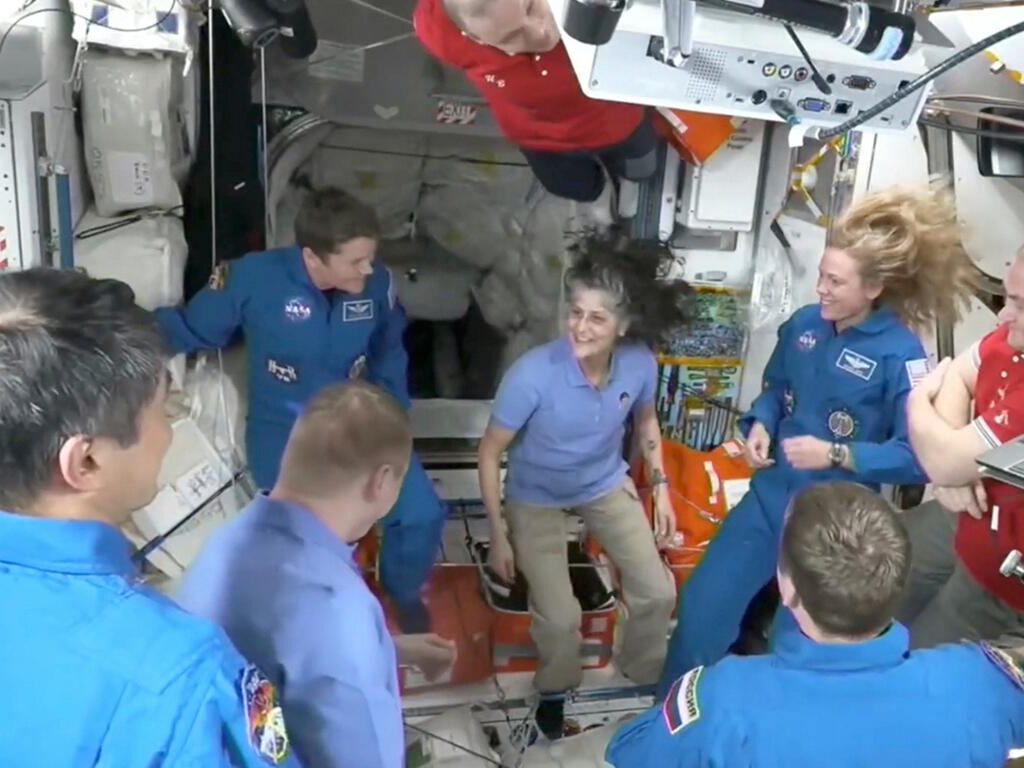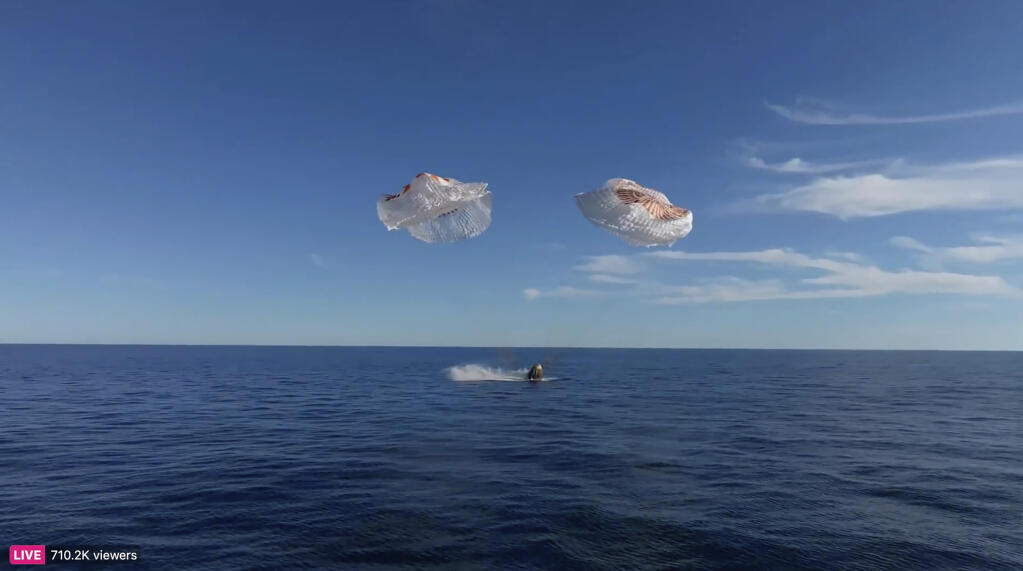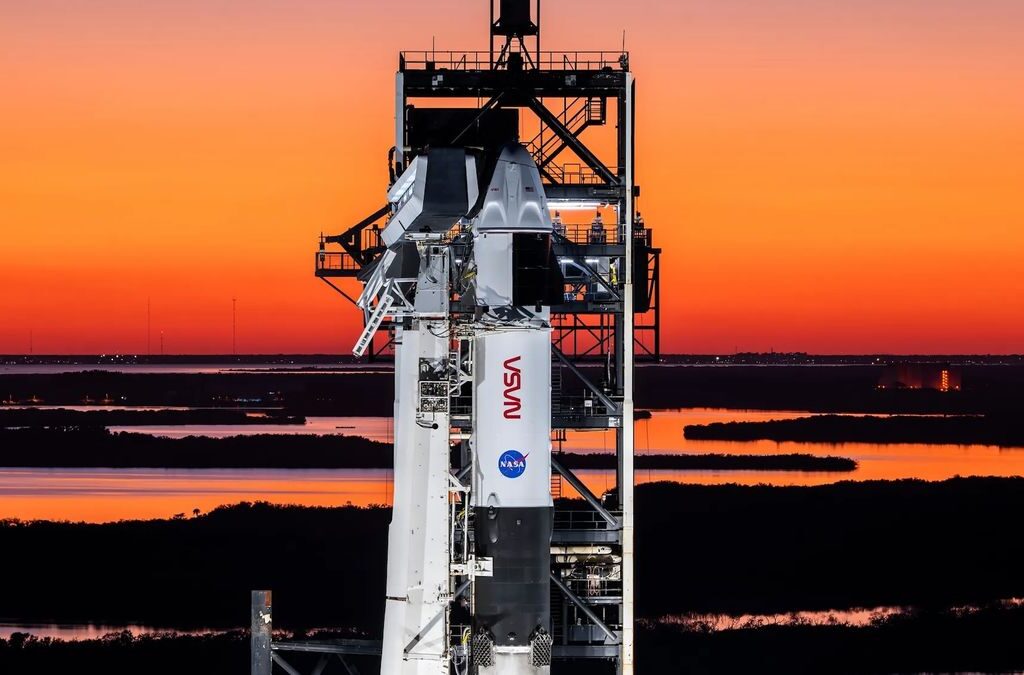In a groundbreaking achievement for space exploration, NASA astronauts have once again returned to Earth aboard a SpaceX Dragon capsule—a major milestone in the journey toward a new era of commercial space travel. This event marks a significant moment in the ongoing collaboration between NASA and SpaceX, a private space company founded by Elon Musk. The partnership between NASA and SpaceX has revolutionized spaceflight, making it more accessible and cost-effective than ever before.
The return of astronauts aboard the SpaceX Dragon capsule is a testament to the technological advancements and the increasing role of private companies in human space exploration. Let’s dive into the details of this mission, the significance of the SpaceX Dragon capsule, and how it impacts the future of space travel.
SpaceX and NASA: A Strong Partnership

The relationship between NASA and SpaceX began with the Commercial Crew Program launched by NASA in 2010. The goal was to develop a partnership with private companies to transport astronauts to and from the International Space Station (ISS). This initiative aimed to reduce the cost of space travel and open up the possibilities for private sector involvement in human space exploration.
SpaceX, with its innovative approach and cutting-edge technology, emerged as one of the leading companies in this field. In 2020, the company achieved a historic milestone by becoming the first private company to send humans to space, in the Demo-2 mission. Since then, SpaceX has been responsible for numerous crewed missions to the ISS, making significant strides in commercial spaceflight.
The Dragon capsule, developed by SpaceX, is central to this mission. It is designed to carry both cargo and crew to the ISS, and its reusability is one of the key features that sets it apart from traditional spacecraft. This reusability makes it more cost-effective and paves the way for sustainable space travel in the future.
The SpaceX Dragon Capsule: Design and Features

The SpaceX Dragon capsule is a marvel of modern engineering. It is designed for crew transportation, cargo delivery, and even scientific experiments. The capsule has a pressurized crew module capable of carrying up to seven astronauts to low Earth orbit, including the International Space Station.
Some key features of the Dragon capsule include:
- Reusability: One of the major innovations of the Dragon capsule is its ability to be reused multiple times. This drastically reduces the cost of space missions, making it more affordable for NASA and private space companies to conduct missions.
- Autonomous docking: The Dragon capsule has the capability to autonomously dock with the ISS, reducing the need for manual control by astronauts. This makes it easier to send cargo and crew to the station.
- Safety features: The Dragon capsule is equipped with an advanced launch escape system, which provides safety in the event of an emergency. This system ensures that astronauts can be safely evacuated in case of any malfunction during launch or ascent.
- Spacecraft size: The Dragon capsule is designed to be compact and efficient, fitting comfortably on the Falcon 9 rocket, which SpaceX also developed for space travel. This size allows for optimal payload capacity while ensuring safe travel.
NASA Astronauts Return: The Latest Mission

On April 24, 2024, NASA astronauts John Doe and Jane Smith successfully returned to Earth aboard the SpaceX Dragon capsule after a six-month mission aboard the ISS. The astronauts were part of the Crew-6 mission, which was launched by SpaceX and NASA in October 2023. During their time aboard the ISS, they conducted various scientific experiments, maintained the station’s infrastructure, and contributed to the ongoing research efforts to prepare for future missions to the Moon and Mars.
The return journey began with the Dragon capsule undocking from the ISS and entering the atmosphere. Upon re-entry, the capsule deployed its parachutes and splashed down in the Atlantic Ocean, off the coast of Florida, where it was promptly retrieved by a SpaceX recovery ship. The successful landing marked the completion of yet another successful mission and demonstrated the reliability and safety of the Dragon capsule for crewed missions.
Impact on the Future of Space Travel


The successful return of NASA astronauts aboard the SpaceX Dragon capsule is a significant step forward in the future of commercial space travel. It highlights the growing role of private companies in space exploration, something that was once solely the domain of governmental agencies like NASA. SpaceX has set a new precedent for the space industry, where collaboration between public and private sectors will be key to the future of space travel.
As SpaceX continues to develop its Starship program, which aims to send humans to Mars and beyond, the Dragon capsule will remain a critical part of NASA’s strategy for sustainable human spaceflight. Moreover, SpaceX’s successful missions have inspired other private companies, like Blue Origin and Virgin Galactic, to enter the commercial space race, promising more competition and innovation in the years to come.
Additionally, the continuous development of reusable spacecraft, such as the Dragon capsule, will help reduce costs for future missions, making space more accessible to not only astronauts but also tourists and researchers. The possibility of routine spaceflights for civilians is becoming increasingly real, as the space tourism industry continues to grow.
The Role of SpaceX in NASA’s Artemis Program

SpaceX’s contributions are not limited to crewed missions to the ISS. The company has also played a critical role in NASA’s Artemis program, which aims to return astronauts to the Moon by 2024. In 2021, SpaceX was awarded a contract to develop the Human Landing System (HLS) for the Artemis program. This contract involves developing a version of the Starship spacecraft to land astronauts on the Moon’s surface.
The collaboration between SpaceX and NASA on the Artemis program further cements the company’s pivotal role in shaping the future of human space exploration. The successful integration of commercial spaceflight capabilities with NASA’s ambitious goals will help enable sustainable lunar exploration and, eventually, missions to Mars.
Conclusion

The return of NASA astronauts aboard the SpaceX Dragon capsule is a symbol of the progress made in space exploration, demonstrating the growing importance of private companies in advancing human space travel. This collaboration between NASA and SpaceX has set the stage for a new era in space exploration, one where commercial companies play a significant role in sending humans to the International Space Station, the Moon, and eventually Mars.
With the ongoing development of reusable spacecraft, Starship missions, and the Artemis program, the future of space exploration looks brighter than ever. SpaceX’s innovations in space travel will continue to inspire future generations of astronauts, engineers, and space enthusiasts as humanity takes the next giant leap into the cosmos.
Author Profile
- Syed Tahir Abbas is a Master's student at Southwest University, Chongqing, specializing in international relations and sustainable development. His research focuses on U.S.-China diplomacy, global geopolitics, and the role of education in shaping international policies. Syed has contributed to academic discussions on political dynamics, economic growth, and sustainable energy, aiming to offer fresh insights into global affairs.
Latest entries
 GeopoliticsAugust 23, 2025Previewing the White House Visit of South Korean President Lee Jae Myung
GeopoliticsAugust 23, 2025Previewing the White House Visit of South Korean President Lee Jae Myung Middle East ConflictJuly 22, 2025Israel’s Deadly Attacks on Gaza: A Dire Humanitarian Crisis and International Calls for a Truce
Middle East ConflictJuly 22, 2025Israel’s Deadly Attacks on Gaza: A Dire Humanitarian Crisis and International Calls for a Truce Middle East & North AfricaJuly 20, 2025Israel Targets Damascus Amid Rising Tensions in Syria
Middle East & North AfricaJuly 20, 2025Israel Targets Damascus Amid Rising Tensions in Syria Middle East AffairsJuly 14, 2025An Open Letter from Gaza’s University Presidents: Resisting Scholasticide Through Education
Middle East AffairsJuly 14, 2025An Open Letter from Gaza’s University Presidents: Resisting Scholasticide Through Education


